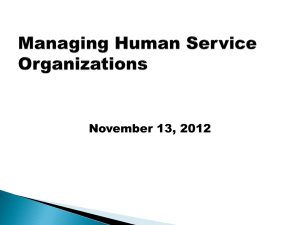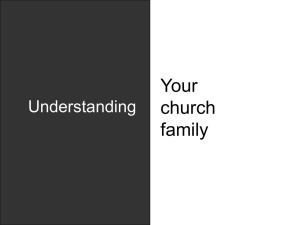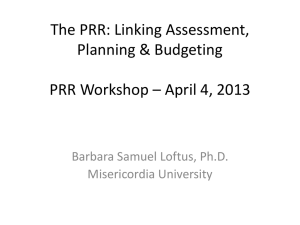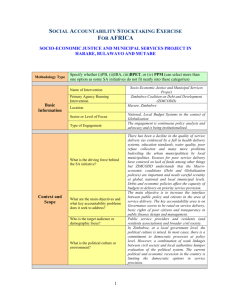Presentation to the 3rd Forum on the African Charter on the
advertisement
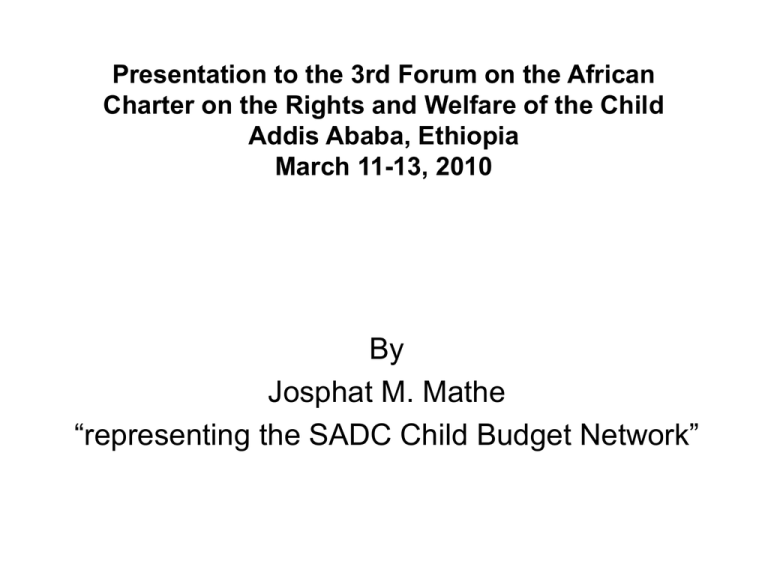
Presentation to the 3rd Forum on the African Charter on the Rights and Welfare of the Child Addis Ababa, Ethiopia March 11-13, 2010 By Josphat M. Mathe “representing the SADC Child Budget Network” TITLE OF PRESENTATION CHILD BUDGETING: WHAT WORKS? WHAT DOESN’T? GAINS TOWARDS REALIZING CHILD RIGHTS DEFINITION OF CHILD BUDGETING This discourse requires that, for a start, we develop a common working understanding of the two concepts – child and budget. CHILD Both the United Nations Convention on the Rights of the Child [UNCRC] and the African Charter on the Rights and Welfare of the Child [ACRWC] define a child as ‘a person below the age of 18 years’. Of course, it may be argued that at times contextual and cultural factures do have a bearing on the conceptualization of a child. BUDGET In simple terms refers to ‘a planning tool expressed in monetary terms’. It shows how expected income or resources will be shared among competing aspirations and priorities. OBJECTIVE Child rights activists’ advocacy about Child Budgeting is about ‘influencing the planning, allocation and utilization of resources with the objective “to realize child rights”. This ideology is founded on the provisions of Article 4 of the UNCRC that realizes that, appropriate legislative, administrative and other support mechanisms are necessary conditions for the implementation and realization of child rights. ISSUES AROUND CHILD BUDGETING 1. Only meaningful when driven by popular will • Child budgeting should be supported by popular sections of the citizenry. For a meaningful process, the citizenry – communities, children, lobbyist groups need to be well informed and empowered to engage in child rights and budget matters. 2. Prioritizing children’s articulated concerns [embracing child participation] • For example, in Zimbabwe, there is a project dubbed the Child Friendly National Budget Initiative [CFNBI] implemented by the National Association of Non Governmental Organizations [NANGO] in partnership with Save the Children Norway – both organizations being founder-members of the SADC Child Budget Network. The Initiative has facilitated the formation of the Zimbabwe Child and Youth Budget Network [ZCYBN], to spearhead the participation of children in the budget debate. This is important, as children are encouraged to discuss amongst themselves and articulate issues that concern them. 3. Selection of issues to focus • Whereas child budget matters are many, focusing on ‘a few manageable’ issues at a time helps avoid ‘clouding and crowding’. The CFNBI in Zimbabwe is currently focusing the Education and Health sectors. This is in line with the SADC Child Budget Network strategic choices, and coincides with the national development objectives of prioritizing the promotion of basic education and child health – which are also set targets for the Millennium Development Goals [MDGs]. 4. Effective Targeting in Advocacy work • Budget advocacy requires robust lobbying. This demands effective and appropriate targeting. Thus, selective targeting of who or what institutions to lobby is vital for an effective advocacy process. In the case of budgeting, the paramount target institution is Parliament and its structures, such as portfolio committees. There are also crucial activists groups that must be targeted, such as Women’s Caucuses, and others relevant to the issue on discourse. 5. The Media and Publicity • Effective publicizing of advocacy issues is instrumental to reaping significant results, and the role of the media is crucial in that regard. Even when targeting, it is important to deal with popular media houses and personnel. It is also crucial to sensitize the media about child rights and friendly child budget reporting. ACHIEVEMENTS/GAINS There are many achievements, though at times nominal, that can be attributed to the child budget advocacy project: • Contribution to the democratization of the budgeting process. In the past, the national budgeting process was known as the preserve of government technocrats and the parliament. The child budget project has gone into the community, sensitizing it and interest groups about the importance of getting involved in the budget making process. This has been well received, and as a result interest groups now articulate issues for prioritization, and publicly demand accountability on utilization of public funds. Even children have on occasions critiqued the way ‘their’ funds have been used. • Mainstreaming of child participation in the budgeting process. As alluded to, in the discussion above, structures such as organized child-led groups have been created and forums arranged for children to come together and discuss issues that affect them. They have also been empowered to critique the utilization of resources through interface dialoguing with ministers, MPs and government technocrats. Some child-inspired forums have been so formidable, and successfully challenged policy that infringed on their rights. • Recognition of the project by state bodies, and awarding it a consultative status on child rights budgeting. Now, when a social sector ministry discusses public budget matters, it invites opinions and the participation of the Child Budget project. Even parliamentary portfolio committees would invite the participation of the childfriendly budget project in any debate that affects the situation of children. • Success in campaigning for the creation of national programmes and budget lines in the national budget to address situations of children, eg. Children in difficult circumstances, the Basic Education Assistance Module [BEAM], the National Action Plan for Orphans and other Vulnerable Children [NAP for OVC]. • Propagation of the concept of District Child Protection Committees [DCPC]. • Partnerships between government and civil society organizations in child rights promotion has seen the emergency of child protection committees in all districts and in some areas cascading through wards to village levels – with the children participating in the committees. CHALLENGES The challenges the CFNBI faced are largely socio-economic, and due to the unstable political environment. The most pronounced ones relate to the following: • The suspension of NGOs field operations during the height of political polarization in 2007-8 • The absence of the main advocacy target institution - Parliament - in 2008 and part of 2009 • No budget was prepared in 2008, and therefore there were no debates around that issue • The new crop of parliamentarians is not familiar with child rights matters and budgeting. This has the effect of drawing back progress as we have to start sensitization anew WHAT CIVIL SOCIETY ORGANIZATIONS [CSOS] SEEK FROM THE FORUM The SADC Child Budget Network is a loose consortium of non-governmental Organizations formed in 2003, and bent on promoting child rights through influencing child friendly national budgeting: • We therefore seek from the Forum and Committee of Experts recognition of our existence and the crusade we propagate to improve the situations of children in our countries through Child Budget advocacy work. The support may be manifested through the creation of similar networks and linkages throughout the Pan-African region. • We also seek support and technical assistance in our endeavours to penetrate SADC structures, and perhaps the AU structures as well, that might influence the establishment of child rights budgeting and monitoring mechanisms in our countries. THANK YOU !! Contact Details 15 Christchurch Avenue, Strathaven, Avondale, Harare, Zimbabwe Telefax: +263 4 308 475 Mobile: +263 11 433 573; +263 914 059 552 Email: joemathe@mweb.co.zw


